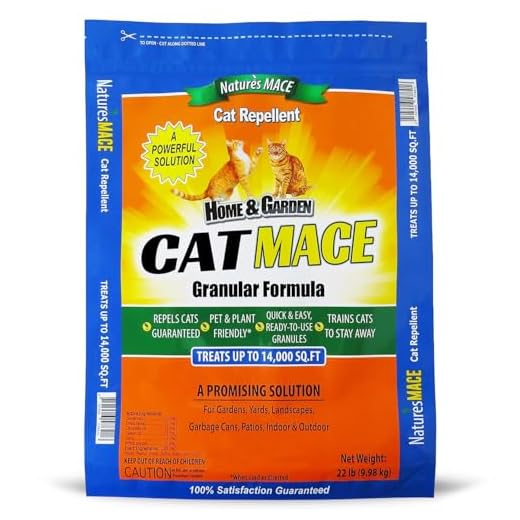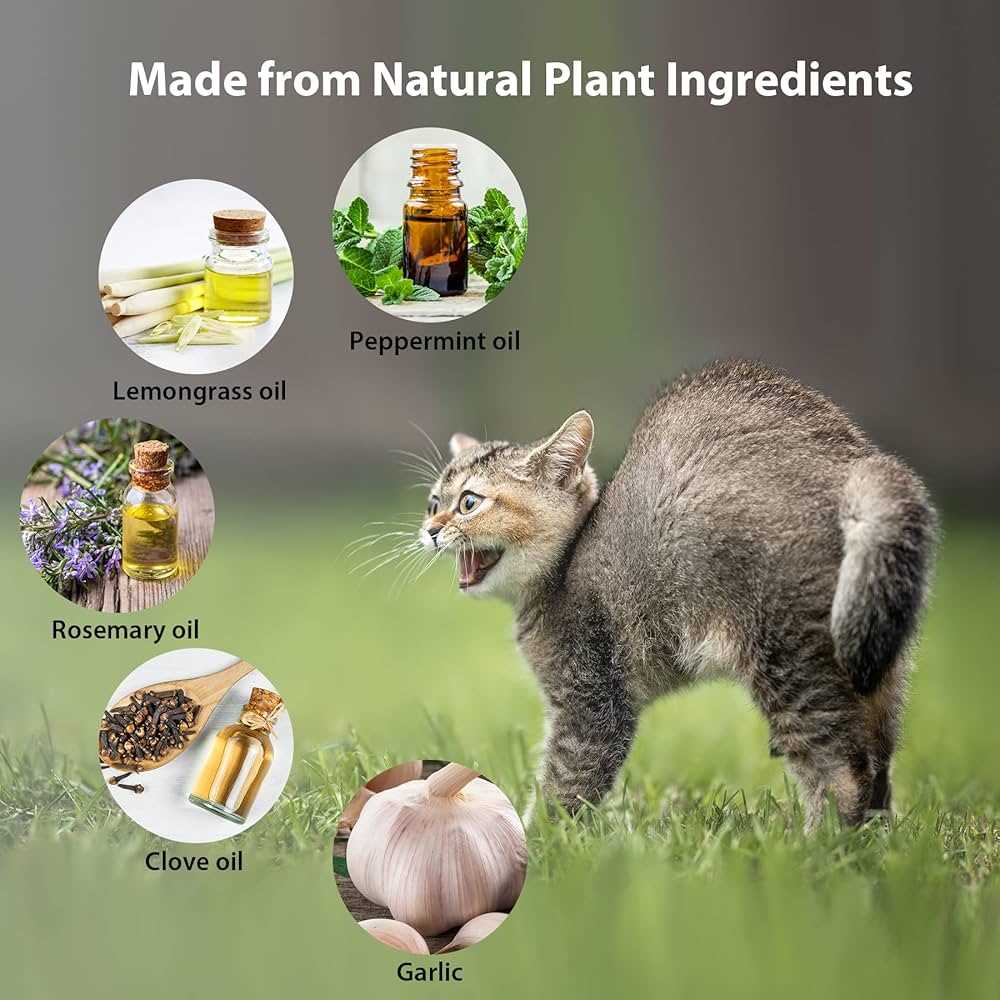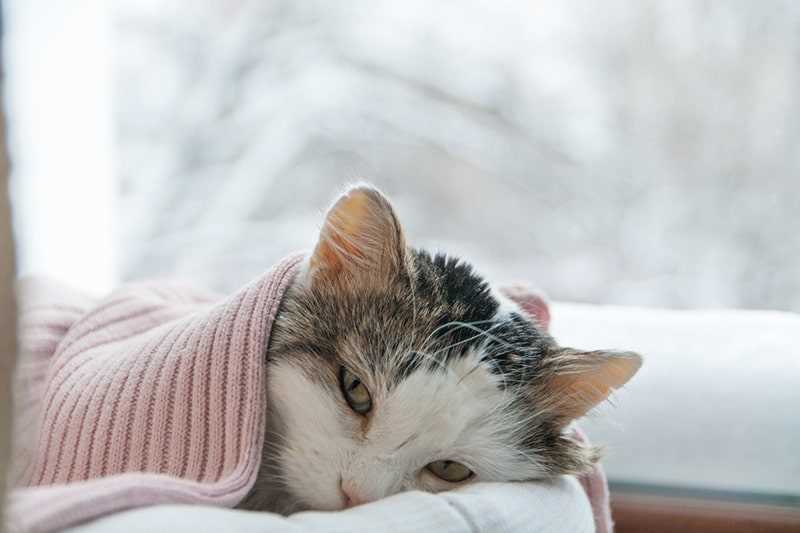



To ensure my leafy companions remain untouched, sprinkle a bit of citrus peels around the pots. Cats like me tend to avoid the strong scent of oranges and lemons. This simple trick creates a natural barrier that discourages us from exploring those tempting green areas.
Another tactic involves using physical barriers. Placing decorative rocks or gravel on the soil surface not only enhances the aesthetic but also makes it less inviting for curious paws. I find the uneven texture quite unappealing, which helps keep me at bay.
Additionally, an infusion of herbal repellents can do wonders. A mix of water and diluted vinegar or a few drops of essential oils can create a spray that deters us. I’m not a fan of those smells, which means your plants stay safe from my playful antics.
Finally, consider providing alternative entertainment. Engaging toys or designated scratching posts can redirect my attention away from your beloved greenery. A well-placed cat tree or a cozy spot for lounging can keep me happily occupied, leaving your plants to flourish.
Strategies to Deter Feline Interest in Greenery
Try citrus peels. The scent of oranges, lemons, and limes is a strong repellent for me and my furry friends. Simply place these peels in the soil or around the base of your greenery.
Consider using physical barriers. Placing decorative rocks or chicken wire over the soil can create an uninviting surface. I personally dislike walking on rough textures.
Natural Repellents
- Rosemary oil: A few drops on cotton balls placed near the plants can keep me at bay.
- Vinegar spray: A diluted mixture of vinegar can deter curious noses when sprayed on leaves (but avoid getting it on the plants directly).
Alternative Attractions
Providing alternatives like cat grass or catnip can redirect attention. I enjoy munching on these instead of bothering the houseplants.
Regular playtime with interactive toys can also minimize the urge to explore the greenery. Keeping engaged is key for us felines!
Choosing Cat-Repellent Plant Varieties
Opt for varieties like rosemary, lavender, and lemon balm. These herbs release scents that deter my fellow felines. Not only do they smell delightful to humans, but their aromatic properties also keep us curious ones at bay.
Consider incorporating marigolds and rue into your selection. Marigolds possess a pungent aroma that many find unpleasant, while rue is known for its bitter scent, which tends to repel us effectively. Both add a splash of color to any garden, making them a practical choice.
Another interesting option is the Coleus canina, often referred to as “scaredy-cat plant.” Its odor is particularly off-putting to my kind, providing a natural barrier without harsh chemicals.
Utilizing these selections can create a welcoming environment for humans, while minimizing the attraction for playful paws. Strategically placing these specimens around your green space enhances its overall charm and functionality.
Using Physical Barriers to Protect Your Plants
Place mesh netting or chicken wire around your green friends. This simple tactic prevents access while allowing sunlight and water to reach the foliage. Ensure the barrier is tall enough to deter jumping and securely anchored to the ground.
Raised Beds and Planters

Utilizing elevated garden beds or planters keeps greenery out of reach. These structures can be designed with solid sides to create a protective enclosure. Consider adding a lid or cover that can be opened for maintenance while blocking access.
Garden Fencing
Installing a fence around your outdoor space acts as a formidable line of defense. Choose a fence height that suits your local wildlife, ensuring it’s tall enough to deter climbers. For added security, incorporate a buried barrier to prevent digging.
For more tips on taking care of your furry friends, check out why do cats foam at the mouth when given medicine.
Implementing Scent and Taste Deterrents for Cats
Utilizing citrus peels is a straightforward way to discourage my feline curiosity. I often scatter orange or lemon peels around the pots. The sharp scent is unappealing, making me think twice before investigating further.
Another effective option is vinegar. Mixing equal parts of water and vinegar in a spray bottle creates a potent deterrent. A light mist on the leaves can keep my nose away. Just be sure to test it on a small area of the foliage first to avoid any adverse effects.
Essential oils, like lavender or eucalyptus, can also be useful. A diluted solution can be applied to cotton balls and placed near the plants. However, I’ve learned that not all oils are safe for my kind, so researching safe options is necessary.
Using Bittering Agents
Bitter apple spray is a popular choice among my human friends. This non-toxic solution is designed to taste unpleasant. A few applications on the leaves can make me think twice before taking a nibble.
Another alternative is to use cayenne pepper or chili powder. Sprinkling a bit of this spice around the base of the pots often deters me from venturing too close. It’s essential to reapply after watering to maintain its effectiveness.
Combining Techniques

Mixing different strategies can yield better results. For instance, I’ve observed that using both scent deterrents and physical barriers reinforces the message that certain areas are off-limits. It’s all about creating an environment that discourages my exploration while keeping the greenery safe and thriving.
To ensure my leafy companions remain untouched, sprinkle a bit of citrus peels around the pots. Cats like me tend to avoid the strong scent of oranges and lemons. This simple trick creates a natural barrier that discourages us from exploring those tempting green areas.
Another tactic involves using physical barriers. Placing decorative rocks or gravel on the soil surface not only enhances the aesthetic but also makes it less inviting for curious paws. I find the uneven texture quite unappealing, which helps keep me at bay.
Additionally, an infusion of herbal repellents can do wonders. A mix of water and diluted vinegar or a few drops of essential oils can create a spray that deters us. I’m not a fan of those smells, which means your plants stay safe from my playful antics.
Finally, consider providing alternative entertainment. Engaging toys or designated scratching posts can redirect my attention away from your beloved greenery. A well-placed cat tree or a cozy spot for lounging can keep me happily occupied, leaving your plants to flourish.
Strategies to Deter Feline Interest in Greenery
Try citrus peels. The scent of oranges, lemons, and limes is a strong repellent for me and my furry friends. Simply place these peels in the soil or around the base of your greenery.
Consider using physical barriers. Placing decorative rocks or chicken wire over the soil can create an uninviting surface. I personally dislike walking on rough textures.
Natural Repellents
- Rosemary oil: A few drops on cotton balls placed near the plants can keep me at bay.
- Vinegar spray: A diluted mixture of vinegar can deter curious noses when sprayed on leaves (but avoid getting it on the plants directly).
Alternative Attractions
Providing alternatives like cat grass or catnip can redirect attention. I enjoy munching on these instead of bothering the houseplants.
Regular playtime with interactive toys can also minimize the urge to explore the greenery. Keeping engaged is key for us felines!
Choosing Cat-Repellent Plant Varieties
Opt for varieties like rosemary, lavender, and lemon balm. These herbs release scents that deter my fellow felines. Not only do they smell delightful to humans, but their aromatic properties also keep us curious ones at bay.
Consider incorporating marigolds and rue into your selection. Marigolds possess a pungent aroma that many find unpleasant, while rue is known for its bitter scent, which tends to repel us effectively. Both add a splash of color to any garden, making them a practical choice.
Another interesting option is the Coleus canina, often referred to as “scaredy-cat plant.” Its odor is particularly off-putting to my kind, providing a natural barrier without harsh chemicals.
Utilizing these selections can create a welcoming environment for humans, while minimizing the attraction for playful paws. Strategically placing these specimens around your green space enhances its overall charm and functionality.
Using Physical Barriers to Protect Your Plants
Place mesh netting or chicken wire around your green friends. This simple tactic prevents access while allowing sunlight and water to reach the foliage. Ensure the barrier is tall enough to deter jumping and securely anchored to the ground.
Raised Beds and Planters

Utilizing elevated garden beds or planters keeps greenery out of reach. These structures can be designed with solid sides to create a protective enclosure. Consider adding a lid or cover that can be opened for maintenance while blocking access.
Garden Fencing
Installing a fence around your outdoor space acts as a formidable line of defense. Choose a fence height that suits your local wildlife, ensuring it’s tall enough to deter climbers. For added security, incorporate a buried barrier to prevent digging.
For more tips on taking care of your furry friends, check out why do cats foam at the mouth when given medicine.
Implementing Scent and Taste Deterrents for Cats
Utilizing citrus peels is a straightforward way to discourage my feline curiosity. I often scatter orange or lemon peels around the pots. The sharp scent is unappealing, making me think twice before investigating further.
Another effective option is vinegar. Mixing equal parts of water and vinegar in a spray bottle creates a potent deterrent. A light mist on the leaves can keep my nose away. Just be sure to test it on a small area of the foliage first to avoid any adverse effects.
Essential oils, like lavender or eucalyptus, can also be useful. A diluted solution can be applied to cotton balls and placed near the plants. However, I’ve learned that not all oils are safe for my kind, so researching safe options is necessary.
Using Bittering Agents
Bitter apple spray is a popular choice among my human friends. This non-toxic solution is designed to taste unpleasant. A few applications on the leaves can make me think twice before taking a nibble.
Another alternative is to use cayenne pepper or chili powder. Sprinkling a bit of this spice around the base of the pots often deters me from venturing too close. It’s essential to reapply after watering to maintain its effectiveness.
Combining Techniques

Mixing different strategies can yield better results. For instance, I’ve observed that using both scent deterrents and physical barriers reinforces the message that certain areas are off-limits. It’s all about creating an environment that discourages my exploration while keeping the greenery safe and thriving.
To ensure my leafy companions remain untouched, sprinkle a bit of citrus peels around the pots. Cats like me tend to avoid the strong scent of oranges and lemons. This simple trick creates a natural barrier that discourages us from exploring those tempting green areas.
Another tactic involves using physical barriers. Placing decorative rocks or gravel on the soil surface not only enhances the aesthetic but also makes it less inviting for curious paws. I find the uneven texture quite unappealing, which helps keep me at bay.
Additionally, an infusion of herbal repellents can do wonders. A mix of water and diluted vinegar or a few drops of essential oils can create a spray that deters us. I’m not a fan of those smells, which means your plants stay safe from my playful antics.
Finally, consider providing alternative entertainment. Engaging toys or designated scratching posts can redirect my attention away from your beloved greenery. A well-placed cat tree or a cozy spot for lounging can keep me happily occupied, leaving your plants to flourish.
Strategies to Deter Feline Interest in Greenery
Try citrus peels. The scent of oranges, lemons, and limes is a strong repellent for me and my furry friends. Simply place these peels in the soil or around the base of your greenery.
Consider using physical barriers. Placing decorative rocks or chicken wire over the soil can create an uninviting surface. I personally dislike walking on rough textures.
Natural Repellents
- Rosemary oil: A few drops on cotton balls placed near the plants can keep me at bay.
- Vinegar spray: A diluted mixture of vinegar can deter curious noses when sprayed on leaves (but avoid getting it on the plants directly).
Alternative Attractions
Providing alternatives like cat grass or catnip can redirect attention. I enjoy munching on these instead of bothering the houseplants.
Regular playtime with interactive toys can also minimize the urge to explore the greenery. Keeping engaged is key for us felines!
Choosing Cat-Repellent Plant Varieties
Opt for varieties like rosemary, lavender, and lemon balm. These herbs release scents that deter my fellow felines. Not only do they smell delightful to humans, but their aromatic properties also keep us curious ones at bay.
Consider incorporating marigolds and rue into your selection. Marigolds possess a pungent aroma that many find unpleasant, while rue is known for its bitter scent, which tends to repel us effectively. Both add a splash of color to any garden, making them a practical choice.
Another interesting option is the Coleus canina, often referred to as “scaredy-cat plant.” Its odor is particularly off-putting to my kind, providing a natural barrier without harsh chemicals.
Utilizing these selections can create a welcoming environment for humans, while minimizing the attraction for playful paws. Strategically placing these specimens around your green space enhances its overall charm and functionality.
Using Physical Barriers to Protect Your Plants
Place mesh netting or chicken wire around your green friends. This simple tactic prevents access while allowing sunlight and water to reach the foliage. Ensure the barrier is tall enough to deter jumping and securely anchored to the ground.
Raised Beds and Planters

Utilizing elevated garden beds or planters keeps greenery out of reach. These structures can be designed with solid sides to create a protective enclosure. Consider adding a lid or cover that can be opened for maintenance while blocking access.
Garden Fencing
Installing a fence around your outdoor space acts as a formidable line of defense. Choose a fence height that suits your local wildlife, ensuring it’s tall enough to deter climbers. For added security, incorporate a buried barrier to prevent digging.
For more tips on taking care of your furry friends, check out why do cats foam at the mouth when given medicine.
Implementing Scent and Taste Deterrents for Cats
Utilizing citrus peels is a straightforward way to discourage my feline curiosity. I often scatter orange or lemon peels around the pots. The sharp scent is unappealing, making me think twice before investigating further.
Another effective option is vinegar. Mixing equal parts of water and vinegar in a spray bottle creates a potent deterrent. A light mist on the leaves can keep my nose away. Just be sure to test it on a small area of the foliage first to avoid any adverse effects.
Essential oils, like lavender or eucalyptus, can also be useful. A diluted solution can be applied to cotton balls and placed near the plants. However, I’ve learned that not all oils are safe for my kind, so researching safe options is necessary.
Using Bittering Agents
Bitter apple spray is a popular choice among my human friends. This non-toxic solution is designed to taste unpleasant. A few applications on the leaves can make me think twice before taking a nibble.
Another alternative is to use cayenne pepper or chili powder. Sprinkling a bit of this spice around the base of the pots often deters me from venturing too close. It’s essential to reapply after watering to maintain its effectiveness.
Combining Techniques

Mixing different strategies can yield better results. For instance, I’ve observed that using both scent deterrents and physical barriers reinforces the message that certain areas are off-limits. It’s all about creating an environment that discourages my exploration while keeping the greenery safe and thriving.








